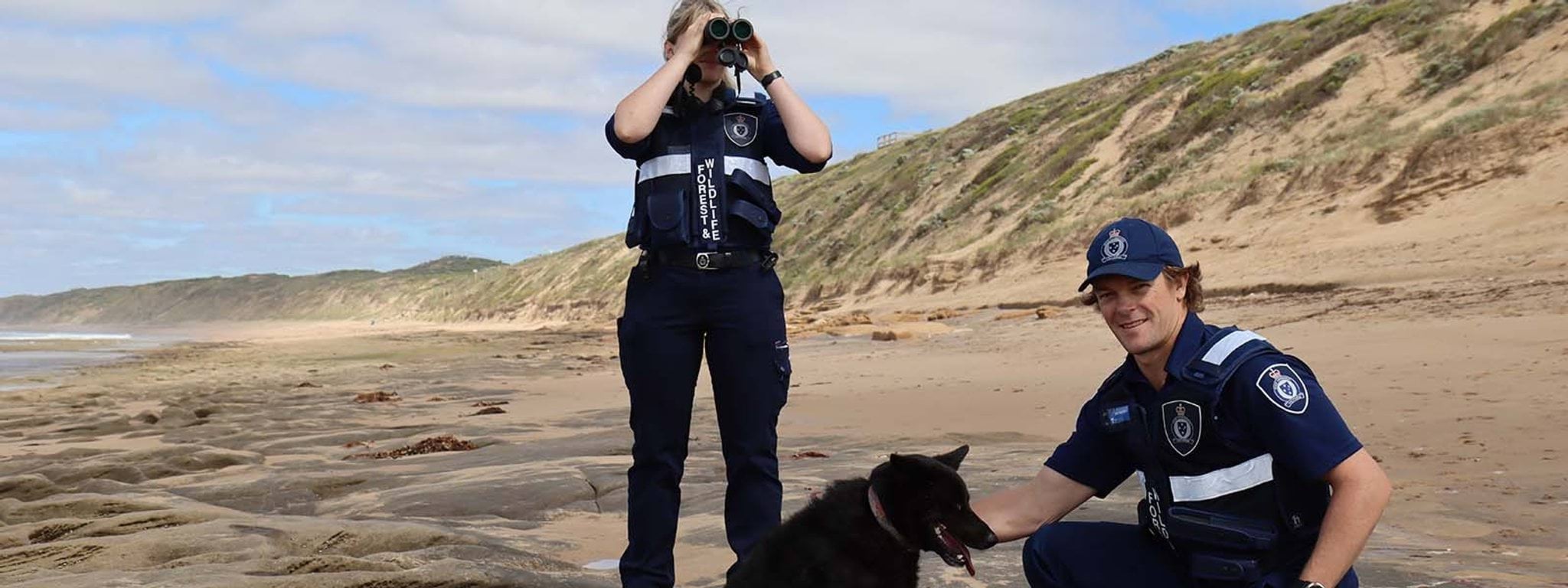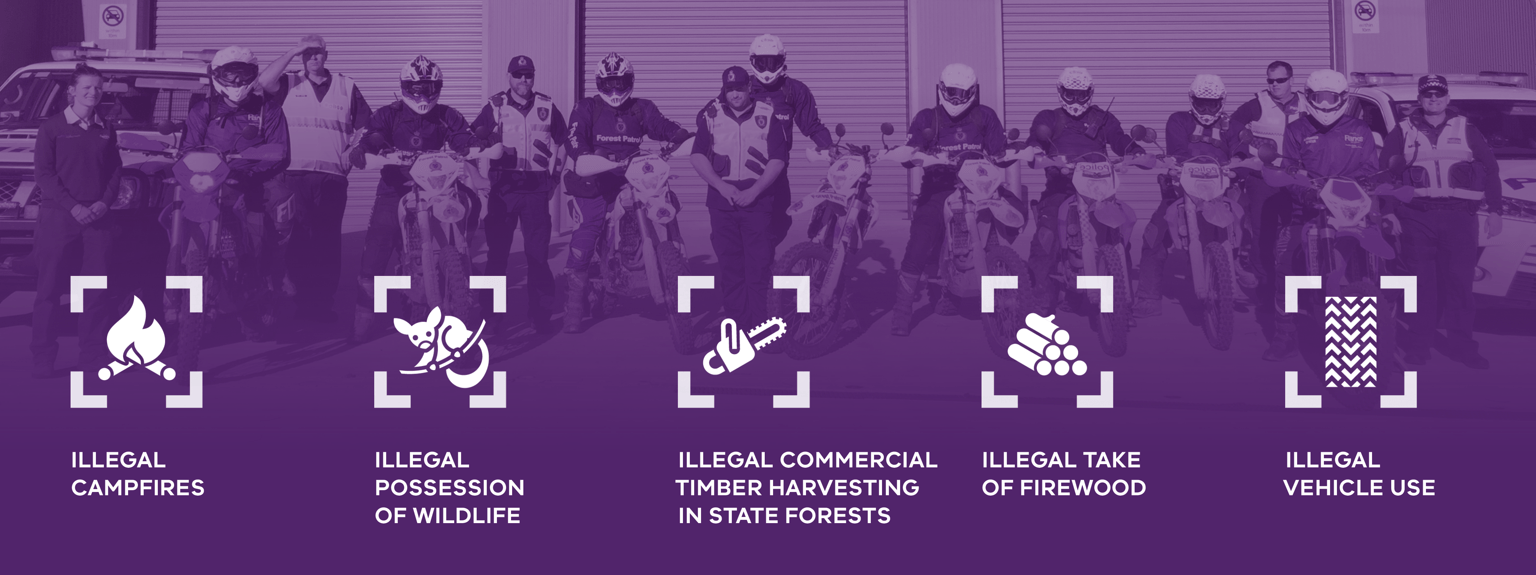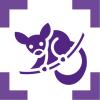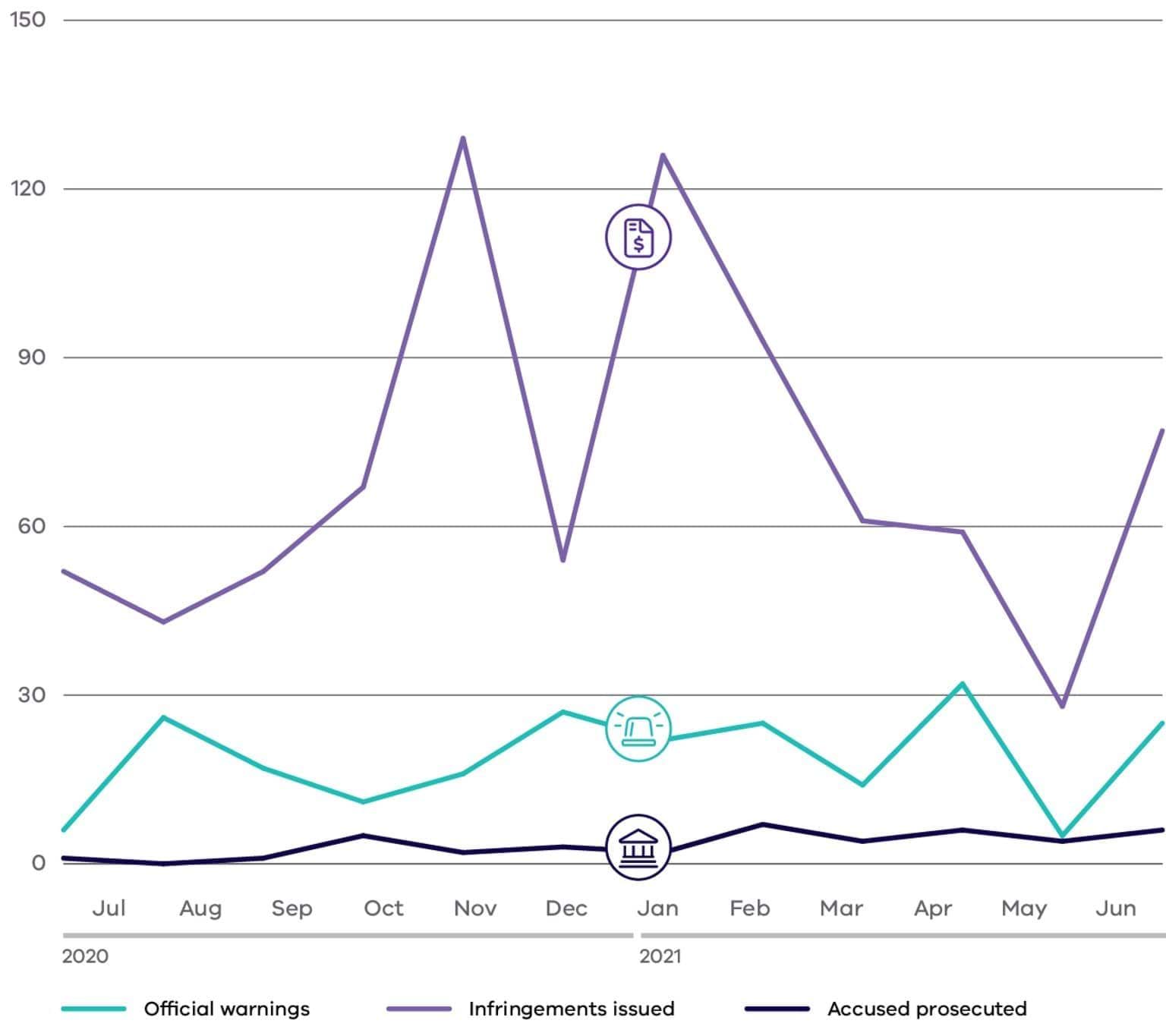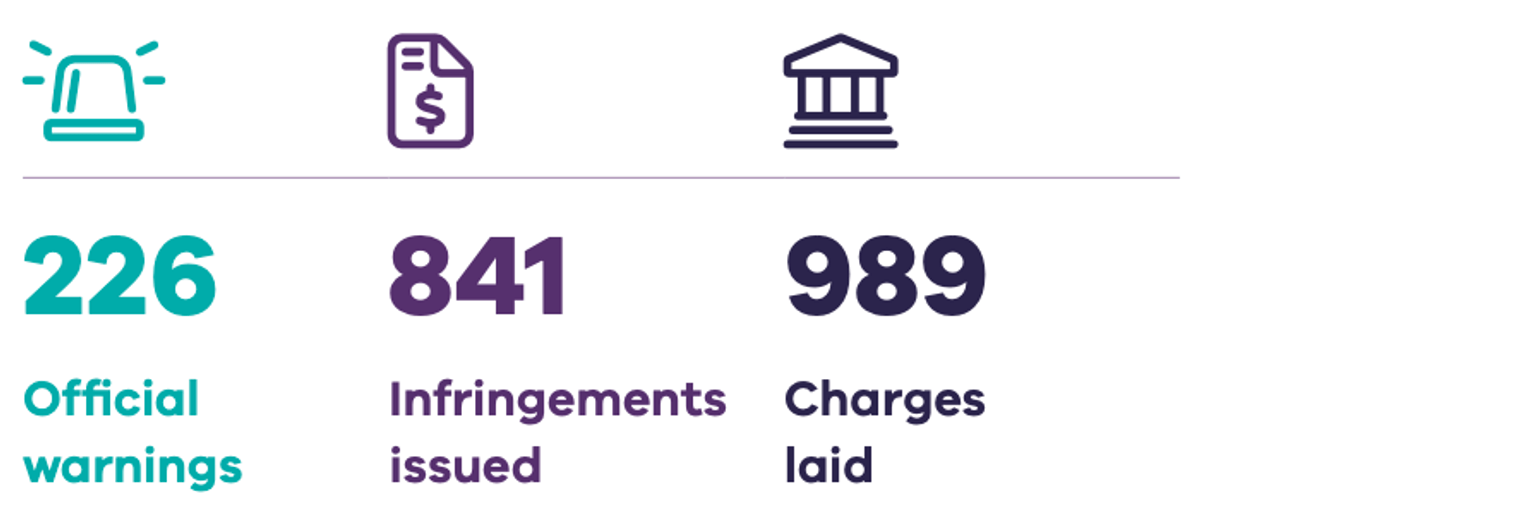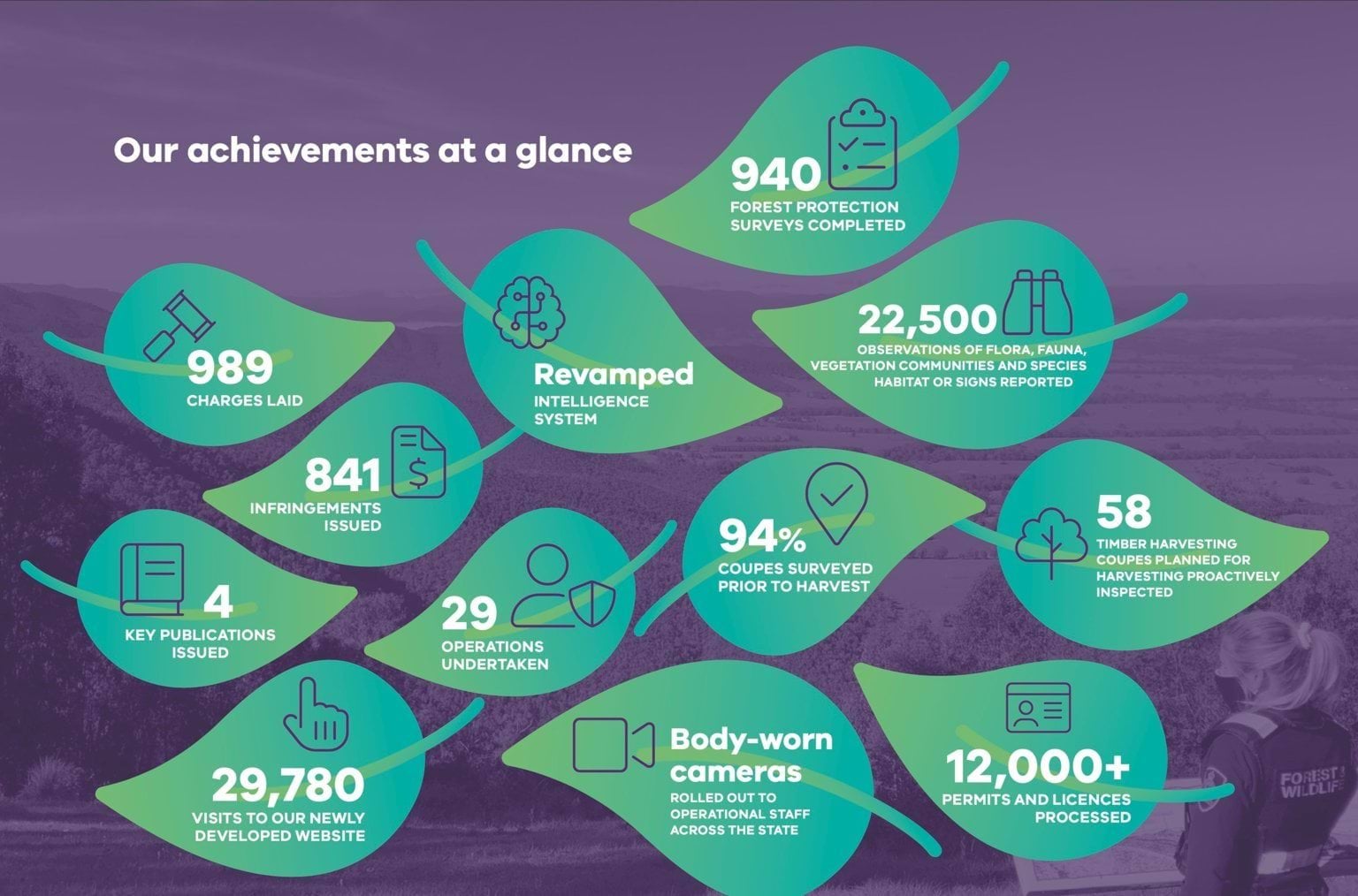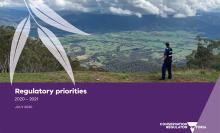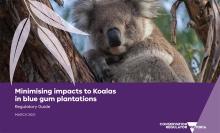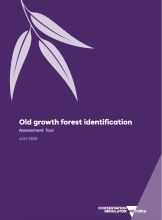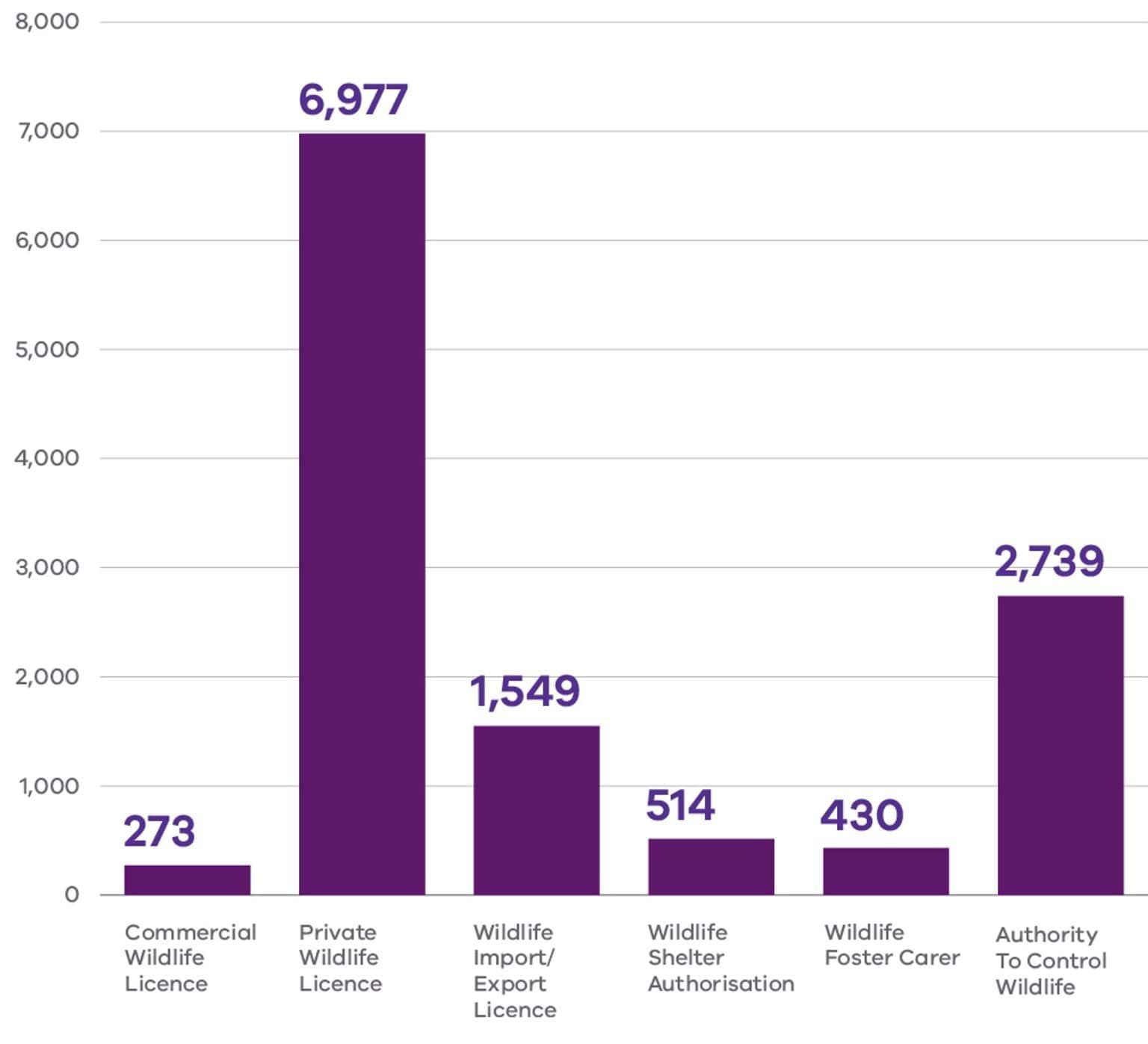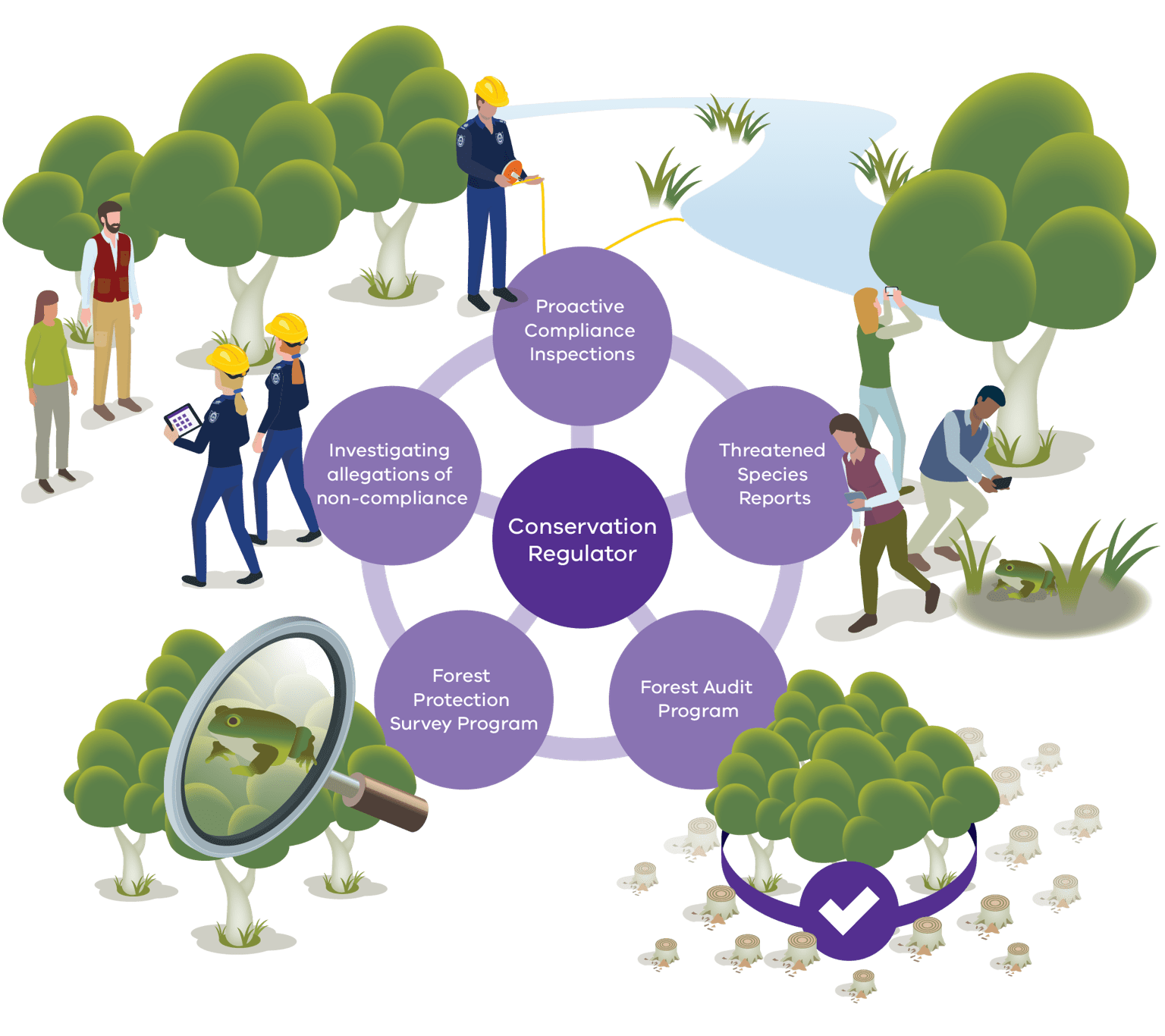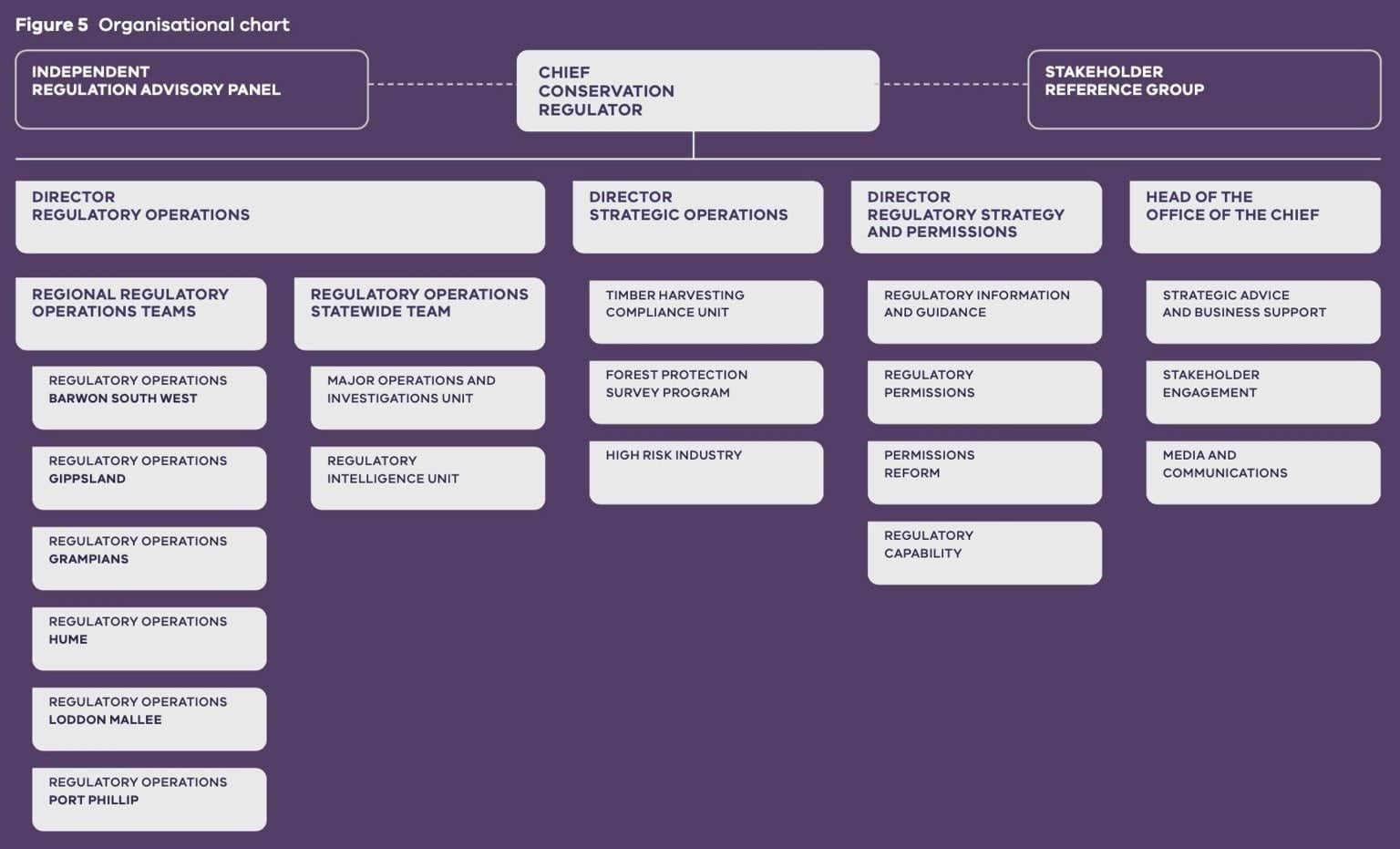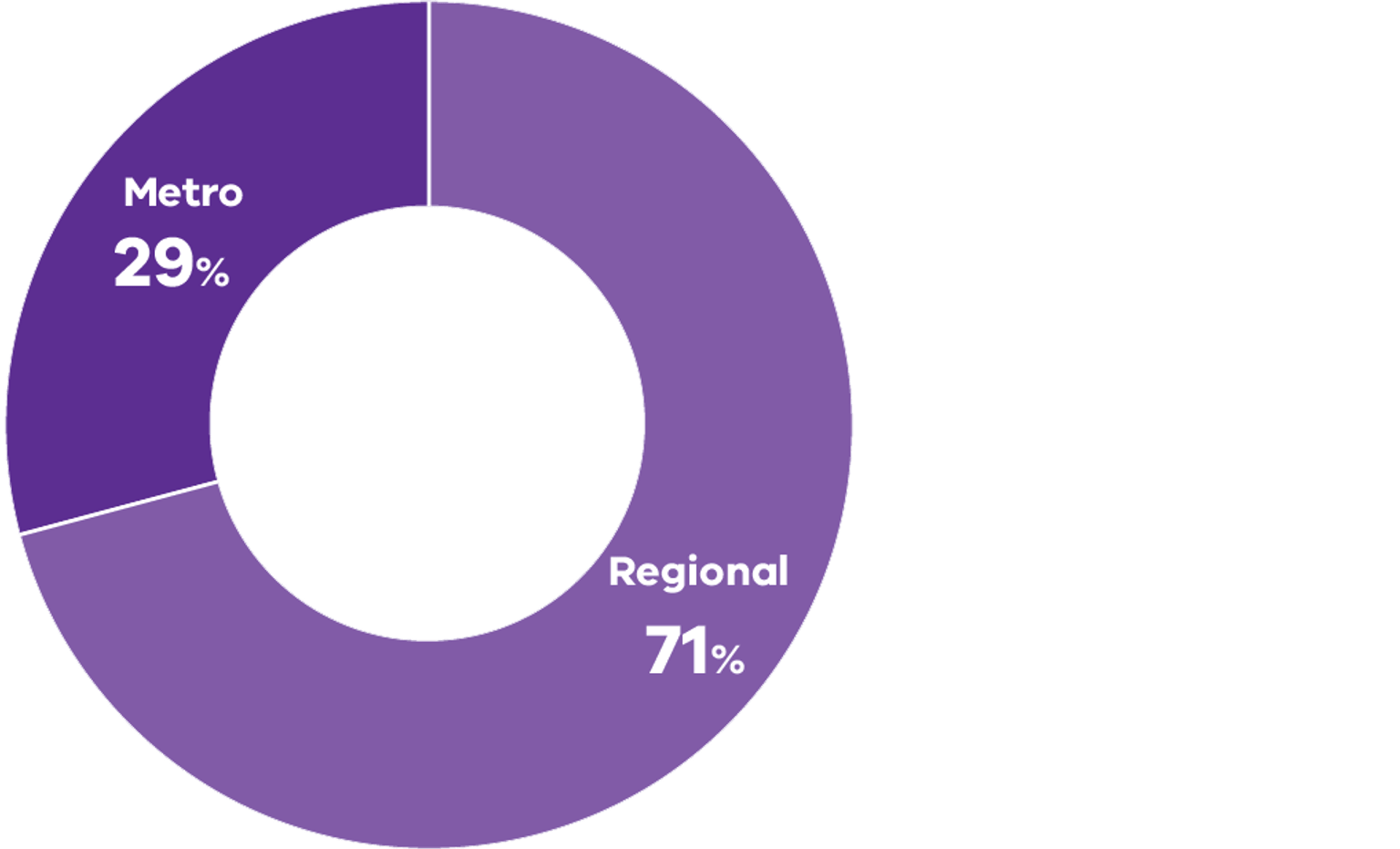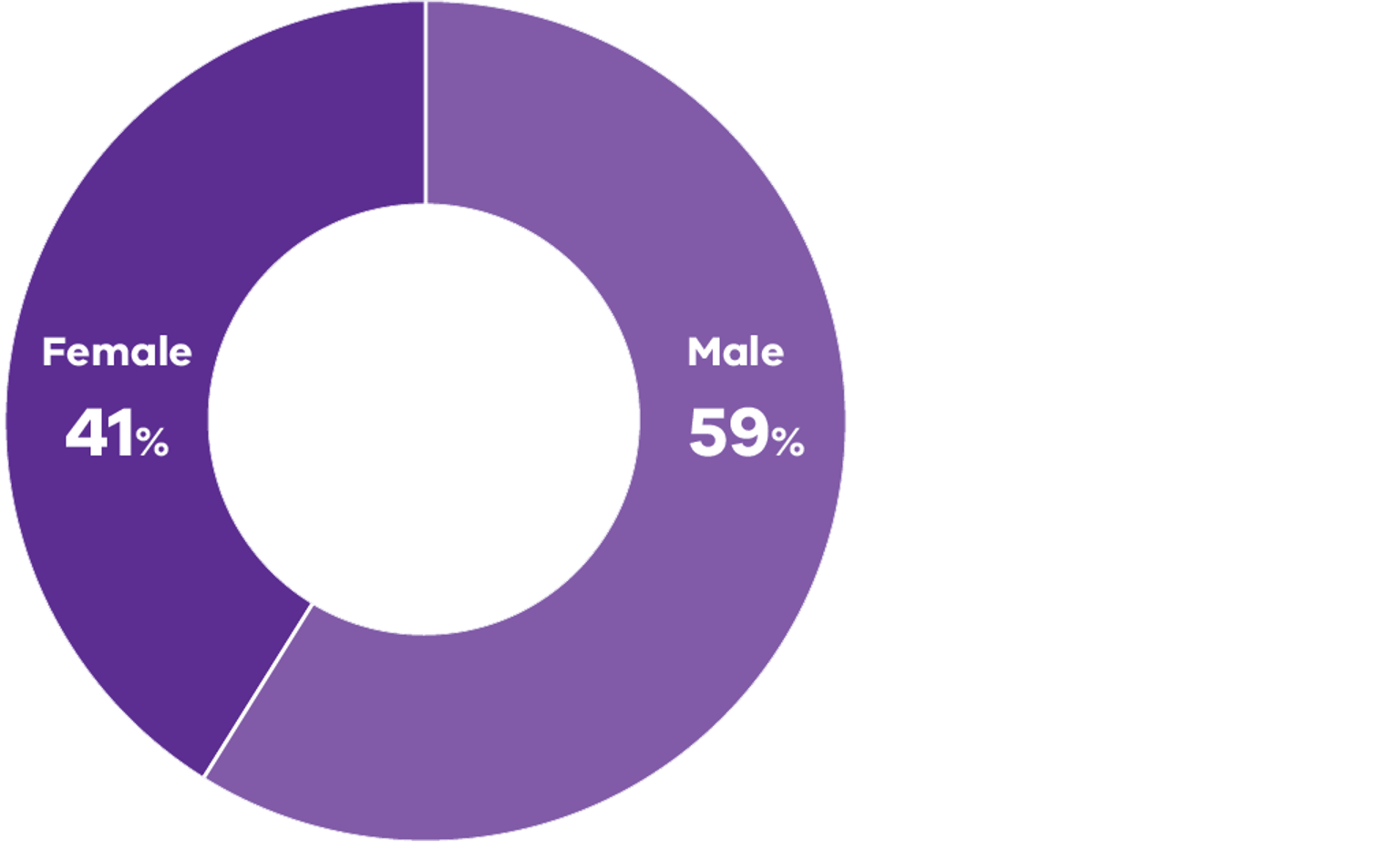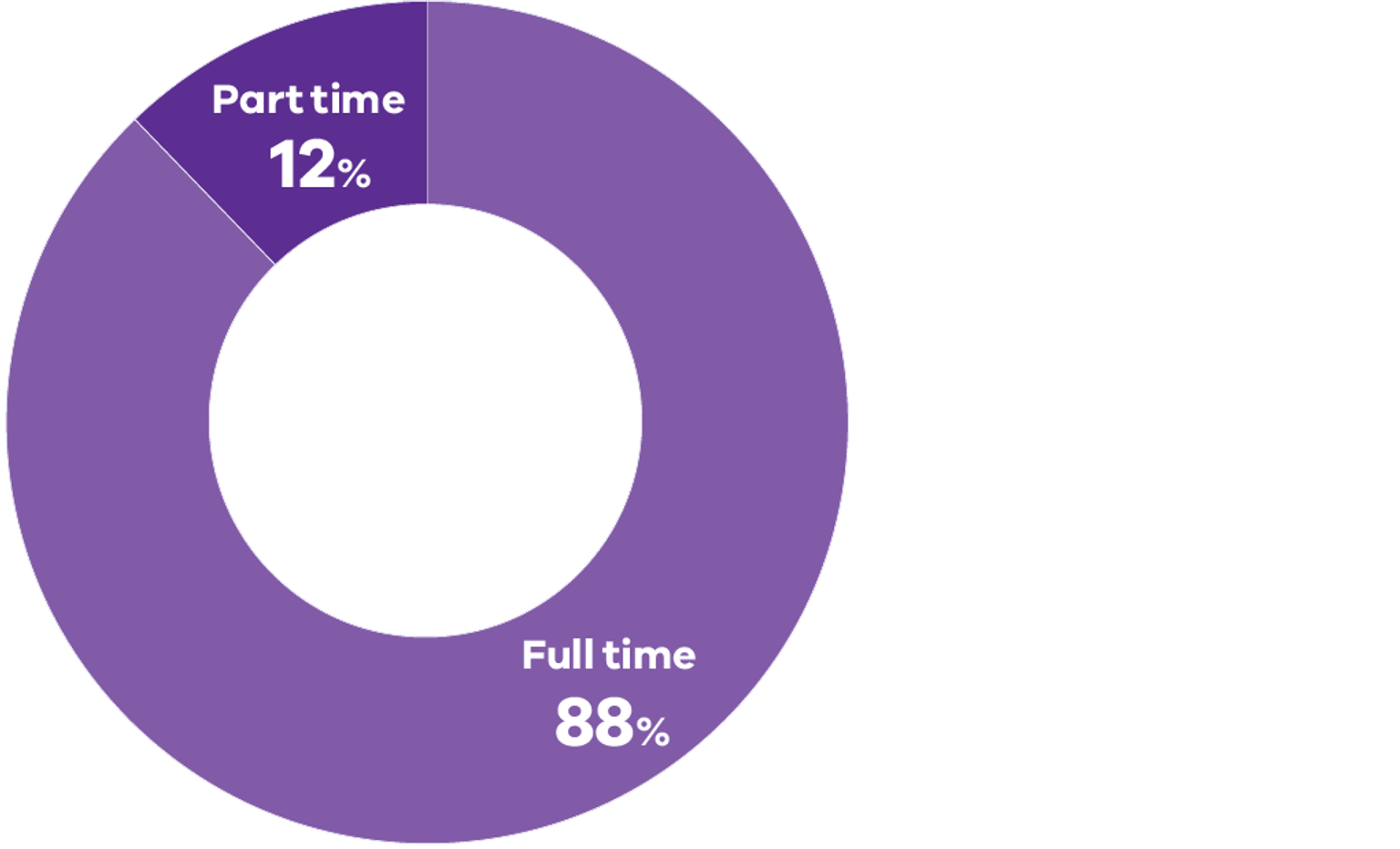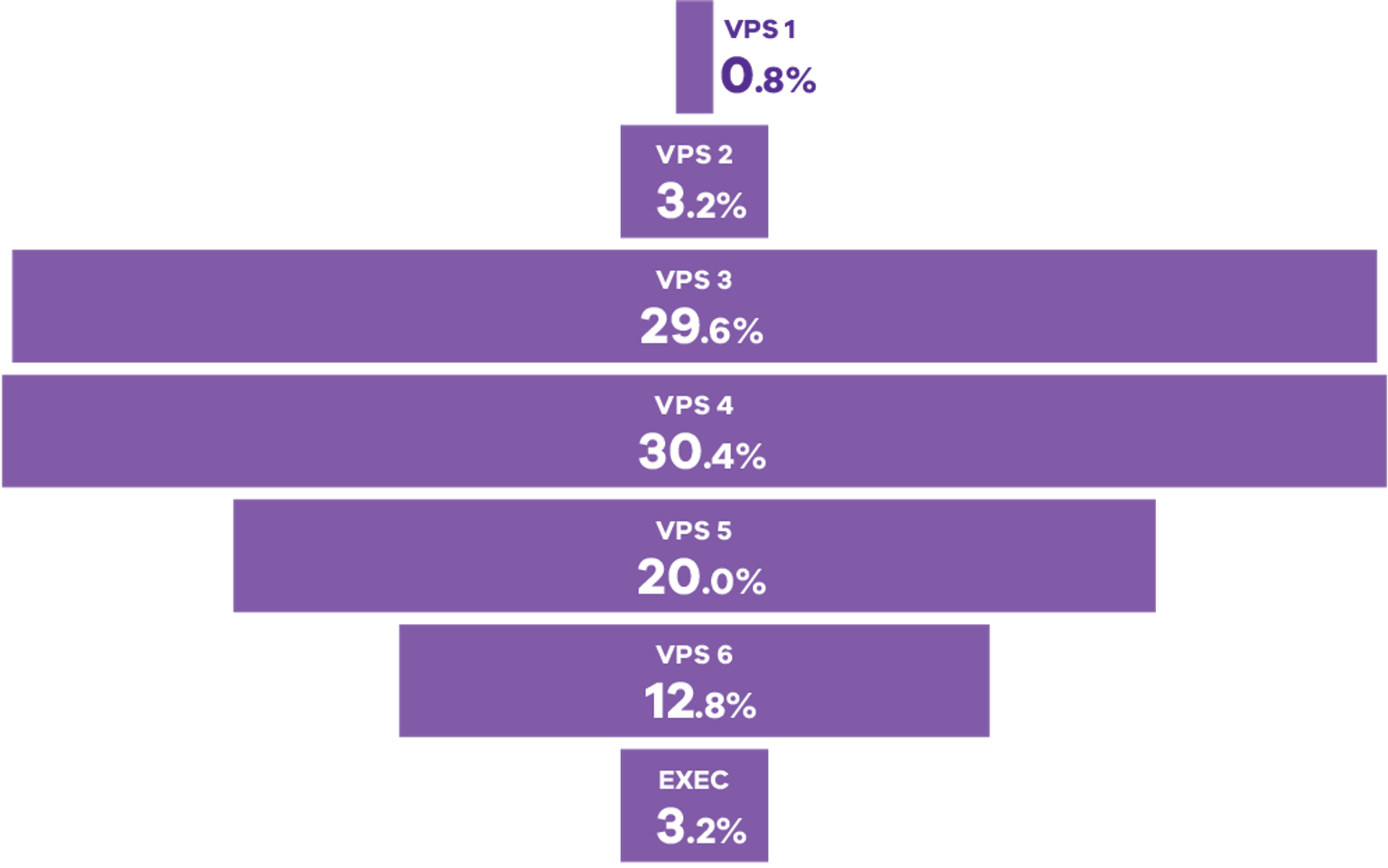- Published by:
- Department of Energy, Environment and Climate Action
- Date:
- 1 Oct 2021
The Conservation Regulator oversees the regulation of timber harvesting, public land use, biodiversity and fire prevention within the Department of Environment, Land, Water and Planning (DELWP).
Now into our second year of operation, the Conservation Regulator has continued to refine and improve our regulatory practice.
In 2020–21 we updated our regulatory priorities to best represent the main risks to our regulatory objectives across Victoria.
Chief's message
Welcome to the Conservation Regulator’s Year In Review for 2020–21. Our second full year of operation is one that has had immense and unprecedented challenges. Challenges which all of the Victorian community have had to face in the context of the global COVID-19 pandemic.
The implications of COVID-19 on an environmental regulator may not seem clear at first however, as the pandemic progressed, the Conservation Regulator saw a range of effects on our work. During times of eased COVID-19 restrictions Victoria’s public land estate experienced very high visitation rates from the Victorian public.
It has been fantastic to see Victorians out enjoying our natural environment and the Conservation Regulator has been there to support the safe and appropriate use of this land. A further unexpected consequence of COVID-19 restrictions was the increased interest of the Victorian public in pet ownership. In our case, this led to a significant increase in applications for reptile licences.
Throughout the year, we have been adaptive and responsive to the ever-changing circumstances. I am immensely proud of the flexibility of our staff to respond to these challenges and continue to make significant headway in tackling the range of compliance and enforcement challenges presented to us.
Not only have we made great progress on our regulatory priorities, but we have streamlined the process for licencing and permits, increased our proactive timber harvesting patrols and inspections and completed a record number of patrols across the state. We have also launched our new website, providing clearer information to the Victorian community.
Our regulatory approach was further embedded in 2020–21, and our focus on educating Victorians about the law, providing compliance support and enforcing the law when required, has only persisted.
I would like to thank our regulatory partners and stakeholders for their continued involvement with the Conservation Regulator through engagement, feedback and partnership.
I look forward to continuing our important work and working with our partners to conserve and protect our environment for future generations.
Kate Gavens, Chief Conservation Regulator
About us
The Conservation Regulator oversees the regulation of timber harvesting, public land use, biodiversity and fire prevention within the Department of Environment, Land, Water and Planning (DELWP).
Now into our second year of operation, the Conservation Regulator has continued to refine and improve our regulatory practice.
Our mission
To be an effective, trusted, best practice regulator
Our mission was developed in 2019 and continued to anchor the Conservation Regulator’s activities throughout 2020–21.
Our regulatory outcomes
We regulate to achieve three key outcomes:
- Equitable and safe access to public land and use of natural resources
- Protected natural and heritage values
- Sustainable communities – social, economic and environmental
Our Regulatory Approach is represented in Figure 1 Overview of our Regulatory Approach below. This approach is central to articulating how we will undertake our regulatory role, in order to achieve the key outcomes outlined above.
Our regulatory priorities
In 2020–21 we updated our regulatory priorities to best represent the main risks to our regulatory objectives across Victoria. This resulted in expanding the priorities to the following:
We have been proactive in educating the community about these risks as well as continuing to maintain both proactive and reactive compliance and enforcement activities across these regulatory priorities.
Progress on our regulatory priorities
In 2020–21 we delivered significant outcomes to support our regulatory priorities. In recognition of the significant regulatory risk relating to the keep, trade and management of native wildlife, an additional regulatory priority relating to wildlife was included for 2020–21.
Continued focus was provided on each of the regulatory priorities, building off the achievements made in our first year of operation.
Illegal campfires
After a devastating 2019–20 bushfire season, 2020–21 saw few fire events. The Conservation Regulator maintained a strong focus on the key risk of bushfires being ignited by illegal campfires, by establishing this as a key priority under Operation Guardian (see case study below).
Around 10 per cent of bushfires are caused by campfire negligence, and the Conservation Regulator has a major focus on educating the public about how to be campfire safe and identifying non-compliance to protect the Victorian community from the devastating impacts of bushfires.
Authorised Officers detected more than 800 unattended or abandoned campfires from July 2020 to June 2021. In 2020–21 there were 18 prosecution charges laid relating to illegal campfires including 7 on days of Total Fire Ban.
We continued our campfire safety education campaign in the media, on social media and through our increased number of Authorised Officers on the ground, particularly during the warmer months.
Illegal take of firewood
The illegal take of firewood continues to be a major issue in Victoria. There are two firewood collection seasons each year where wood can legally be taken from designated areas on public land.
Unfortunately, not everyone follows the rules of where, when and what wood can be collected. The Conservation Regulator works to ensure compliance with firewood collection rules.
In 2020–21 there were 51 illegal firewood prosecution charges laid. Our multi-agency firewood operation, Operation Hollows, continued into the 2021 season with a renewed focus on working with other land managers, as well as a regional approach in dealing with key offenders and hotspots for firewood theft.
We worked closely on this operation with partner agencies Forest Fire Management Victoria and Parks Victoria. We also developed a regulatory strategy for illegal firewood which will operate until 2023 to help us efficiently and effectively regulate illegal firewood removal from public land.
Regulating native timber harvesting
The Conservation Regulator is responsible for monitoring compliance and enforcing the law for native timber harvesting in state forests.
There are a range of programs and activities that the Conservation Regulator delivers to fulfill this responsibility, and these are further detailed in Regulating timber harvesting.
Operation Guardian
Through 2020–21, Authorised Officers across the state have been proactively patrolling state forests identifying non-compliance and informing members of the community about the rules in state forests.
This operation supported directions from Victoria’s Chief Health Officer around COVID-19 restrictions, including physical distancing and group gatherings. It aimed to maximise compliance and reduce potential transmission of the virus.
It also integrated patrolling activities across our regulatory priorities of illegal campfires, illegal firewood, and the illegal use of public land, delivering strong results.
In 2020–21, a total of 818 patrols were conducted across the public land estate focusing on areas of high visitation and environmental risk.
Regulating the use, keeping, trade, treatment and control of wildlife
This new regulatory priority aimed to raise awareness about the protection of Victoria’s wildlife.
The Conservation Regulator plays an important role in protecting Victoria’s wildlife, by identifying, investigating and prosecuting those responsible for wildlife crimes.
This year we released a new regulatory guide for minimising the impacts to koalas in blue gum plantations for plantation owners and managers. It also describes how the Conservation Regulator will oversee authorisations, compliance and enforcement.
We have continued to work closely with Crime Stoppers Victoria in 2020–21, encouraging the public to report suspicious wildlife behaviour through this anonymous channel.
Sadly, wildlife cruelty is still an issue our Forest and Wildlife Officers encounter across the state.
In 2020–21 there were 905 prosecution charges laid relating to wildlife.
We work closely with partner law enforcement agencies, to undertake investigations targeting wildlife crimes and use all the tools at our disposal to stop these crimes – from surveillance technology and search warrants to data extraction and forensic techniques and equipment.
Taking action on wildlife crime
Each year, the Conservation Regulator assesses and investigates hundreds of reports of wildlife crime. These includes harm to individual wildlife, or more systematic activities where harm is brought against a large number of animals.
Since 2019, the Conservation Regulator has been working with Forest Fire Management Victoria, Victoria Police and Agriculture Victoria to investigate a number of deceased wedge-tailed eagles found in the Violet Town area.
In December 2020, a Violet Town individual was charged over the unlawful possession of more than 140 protected native bird carcasses, 128 of them wedge-tailed eagles, which were found across paddocks north of Violet Town.
The individual is facing 291 charges under the Wildlife Act 1975 and Prevention of Cruelty to Animals Act 1986, including the poisoning of wedge-tailed eagles.
The Conservation Regulator is committed to combating wildlife crime and protecting our iconic species.
Permits and licencing
The keeping of most wildlife requires a licence or permit which the Conservation Regulator is responsible for issuing.
We are also responsible for assessing and issuing Authority to Control Wildlife permits to landowners having ongoing issues with native wildlife including damage to buildings, pastures or crops.
Since being established in 2019 we have worked to improve the Authority to Control Wildlife system by improving: guidance for applicants; assessment methods for our staff; and guidance on when external expert advice should be sought.
Each year the number of permits issued varies, largely due to environmental conditions. In 2020, we experienced a significant increase in applications for wildlife licences and permits during each of Victoria’s lockdown periods. At their peak, there was a 50 per cent rise in applications.
In 2020–21 more than:
- 3,400 private wildlife licence applications were processed which resulted in over 2,600 licences issued
- 70 new commercial wildlife applications were processed
- 1,400 import and export permits were processed.
Our role is also to support licence and permit holders in understanding their obligations and we monitor compliance with licence and permit conditions. We do this by providing supporting guidance and information at point of application and renewal of licences and permits, and also field hundreds of enquiries each year that come via email, or through the Customer Call Centre.
Monitoring compliance is also essential. Across the state, our regulatory operations teams conducted hundreds of compliance checks of private and commercial wildlife licences and permits.
Protecting Victoria’s biosecurity and agriculture
Taking, keeping, and trading unlawfully obtained wildlife are serious offences which can have a huge impact on biosecurity.
This is why the Conservation Regulator plays a key role in wildlife licencing and permissions.
In November 2020, a three-metre long Albino Burmese Python was seized from a Ballarat home after a search warrant was conducted by Conservation Regulator Authorised Officers, Agriculture Victoria and Victoria Police.
It is illegal to privately own a Burmese Python in Victoria due to the threat they pose to the state’s biosecurity and agriculture. Due to their size, these pythons also pose a risk to people and domestic pets in the event the animal escapes or is released.
The animal was euthanised and the investigation is ongoing.
Illegal vehicle use on public land
Off-road driving in forests, parks and reserves can cause erosion, damage native vegetation and destroy wildlife habitat. Patrols to stop and deter this illegal activity were conducted throughout the year.
In 2020, off-road motorcycle sales jumped more than 30 per cent compared to the previous year. This increase in sales suggests that there are more people out in our state forests, some of whom may not always be complying with the law.
Authorised Officers observed thousands of riders and drivers in forests, parks and reserves.
In 2020–21 there were seven prosecution charges made relating to off-road vehicle use on public land.
This was also part of Operation Guardian patrols and Authorised Officers also reported to Victoria Police unlicenced drivers or riders, and unregistered vehicles.
Figure 2 provides a month-by-month breakdown of the number of warnings and infringements issued, and number of accused prosecuted.
The number of prosecutions being heard declined in 2020–21 due to COVID-19, and the number of infringements and warnings increased compared to 2019–20 levels due to increased patrolling of the public land estate.
Our achievements
In our second year of operation, we have continued to establish ourselves as a new regulator. We have sought to be more open and transparent and focus our efforts on where our greatest risks lie to have the most impact possible.
Listed below are some of our key achievements, initiatives and projects in 2020–21.
Key publications
Continuing to communicate our areas of focus, along with how we regulate and what we are seeking to achieve, are critical to our success as a regulator. To support this, in 2020–21 we published:
Updated annual Regulatory Priorities for 2020–21 outlines our state-wide priorities and recognises the unique context and compliance risks facing the Victorian regions. |
|
|
Guidance setting out a reformed regulatory approach to minimising the impact on koalas in blue gum plantations. |
|
|
Old Growth Forest assessment tool and guidance supporting a consistent approach to the identification of ‘old growth forest’ so that it can be appropriately protected. |
|
|
Draft guidance on Greater Glider consultation providing advice to the community about how to record Greater Glider sightings and report them to the Conservation Regulator. This guidance will be finalised in the second half of 2021. |
Upgrades to our tools and systems
Being a modern regulator, means we need to constantly update and upgrade our systems, tools and processes.
Technology advances year on year, and in 2020‑21 we have adapted and upgraded a number of our systems and processes.
Our authorised officers are now equipped with body worn cameras to use whenever they head out on operational duties.
This is the same technology used by Victoria Police, and is another way of helping obtain strong evidence during a patrol, inspection or when executing a warrant, while at the same time keeping officers accountable for their actions. Officers are still required to make field notes, but the footage removes the degree of doubt which can sometimes come with reciting information from memory.
A new internal intelligence platform has been a game changer for how our authorised officers gather information about incidents and persons of interest. Officers can now report in real time from the field using a mobile application. This enables real time monitoring, faster reporting and response times enabling offenders to be identified and intercepted faster and more efficiently. Advances in our intelligence tools will continue into 2021–22.
We have made significant improvements to our internal Case Management Framework to streamline our processes and procedures. This has not only increased efficiencies, but allows for individual cases to be better triaged, tracked, and progressed, supporting more timely and proportionate outcomes.
We established the map-based Forest Information Portal providing significant improvements in public access to forest related data and information.
Continuing to improve transparency
Trust is a key component of the Conservation Regulator’s mission, and transparency is critical to help build the community’s trust in us as a regulator.
We have made concerted efforts to identify and act on opportunities to improve our transparency.
This has included launching an entirely new website which provides better, clearer and more comprehensive information about not just our regulatory activities and outcomes, but also how to comply with the law.
We have provided the community with open access data utilised by timber harvesting programs via the Forest Information Portal.
This interactive website allows anyone to view forest-related data such as vegetation types, boundaries and recreation locations as well as information from programs including our Forest Protection Survey Program.
Our new external quarterly newsletter, Conservation Matters, launched in late 2020 is an opportunity to communicate with our stakeholders about the latest updates from the regulator, key changes, and opportunity to have their say.
We have also continued to consult through the Victorian Government’s EngageVic online platform, seeking feedback on draft tools, strategies and guidance. For each consultation process we publish engagement reports to summarise what we heard, and what changed, or did not and why, as a result of the feedback provided.
Forest Information Portal
The Forest Information Portal is an interactive website allowing anyone to view forest-related data such as vegetation types, boundaries, and recreation locations as well as information from programs including the Forest Protection Survey Program.
The portal provides background spatial information such as administrative boundaries, ecological vegetation communities, forest management zones, areas of modelled Old Growth Forest, modelled Rainforest and areas that are planned for harvest.
Users can search for and download data and information relating to the Forest Protection Survey Program, search for specific coupes planned for harvest, and can upload their own data or add drawings to help analyse what they are seeing.
The portal has a wide range of utilities including the ability to search for data such as localities and timber harvesting coupe boundaries, create drawings, plot data and print maps and survey reports.
Appropriate, efficient and consistent use of permissions
The Conservation Regulator administers regulatory permissions (licences, permits and authorities) to selectively grant permission to conduct an activity which is otherwise illegal. We assess all applications that are made to us, and decide whether to grant or refuse a permission application.
In 2020–21, the Conservation Regulator processed more than 12,480 licences and permits. Figure 3 outlines the types and volumes of wildlife licences, permits and authorities issued in 2020–21.
Improvement is continuous
The Conservation Regulator is committed to continually improving our licencing and permit systems to make them more efficient, user-friendly and consistent.
In 2020–21, we transitioned a number of our licencing services online. Where traditionally we have relied upon paper-based applications, including for private wildlife licences, we can now receive and process electronic applications. The move towards electronic processing of all licence applications will be a key focus into 2021–22.
During 2020–21, we continued to progress a range of measures to improve the Authority to Control Wildlife system. This included improved guidance to applicants, along with smoother applications and assessment processes. These improvements will continue into 2021–22.
Working together to achieve better impact
We achieve a greater impact when we work together. The Conservation Regulator has a broad regulatory role, and there are endless opportunities to work with our partners and stakeholders to achieve good outcomes for our environment and community.
Our relationships with co-regulators such as Parks Victoria, Game Management Authority and Victoria Police are key. Throughout the year we work together through activities such as joint patrols, investigations, operations and educational activities.
We are reliant on members of the community to report potential breaches of the law, provide information when we conduct investigations, and to contribute to public consultation which we undertake in the development of our publications, such as guidance and strategies.
We have sought input from stakeholders via EngageVic consultation, through our Stakeholder Reference Group, and seminars and forums, such as our inaugural Timber Harvesting Compliance and Enforcement Forum held in June 2021.
The input and advice received is critical in enabling us to improve the way we undertake our regulatory role.
Supporting our community in the response to COVID-19
All parts of the Victorian Government have had to adapt their activities in response to COVID-19 as we work together to face the unprecedented challenges posed by the pandemic.
The Conservation Regulator has been playing its part too, and as experts in operations, investigations and surveillance, these skills have been drawn upon by government.
In 2020–21, the Conservation Regulator has been a partner to a multi-agency high risk industries operation to help promote and enforce compliance with Victoria’s COVID-19 requirements for businesses and industries in metropolitan Melbourne and regional Victoria.
The work includes monitoring industry compliance against the Chief Health Officer’s COVID-19 directions and providing information and intelligence back to support future compliance and enforcement operations.
This contribution has assisted the Conservation Regulator to play its part and support our communities during the COVID-19 pandemic.
Regulating timber harvesting
Timber harvesting continues to be a key focus for the Conservation Regulator.
A holistic approach to timber harvesting regulation
The Conservation Regulator undertakes a number of activities to monitor compliance with timber harvesting regulations.
We have an integrated approach to the identification and protection of forest values, and ensure that timber harvesting complies with environmental law (see Figure 4 below).
Under this approach, we undertake a range of proactive activities along with audits and assess all allegations of non-compliance. When non-compliance is identified, we take proportionate enforcement action.
Proactive coupe inspections
The Proactive Coupe Inspection Program focuses on preventing environmental harm during timber harvesting. The coupes we inspect are selected based on the presence of important environmental values and high-risk activities.
Information such as threatened species surveys, third-party reports, independent audits and our officer observations are integral when prioritising coupes for inspection.
Inspections may occur before, during or after timber harvesting, and sometimes across the entire harvesting cycle.
In 2020-21, we inspected 58 coupes, exceeding the target of 30 per annum.
We have found that an active and growing field presence prevents harm and means that issues can be resolved before they impact on environmental values or become more serious issues of non‑compliance.
Prior to this program, Conservation Regulator was largely reactive and reliant on third party reports to drive our compliance effort. While third party information remains important to the Conservation Regulator, we now have a proactive approach to prioritising our compliance effort and generating our own intelligence.
Reports of non-compliance and threatened species detections
The Conservation Regulator receives reports from the community about allegations of non-compliant timber harvesting activities, as well as reports of threatened species in, or adjacent to, locations where timber harvesting is planned.
All allegations are assessed by experienced Authorised Officers in accordance with case management principles and protocols.
While threatened species verification occurs, the Conservation Regulator ensures interim protections are applied to protect values from timber harvesting.
In 2020–21, we received 62 reports of alleged non-compliance compared to 30 in 2019–20.
With respect to threatened species reports, we received 70 in 2020–21, compared to 74 in 2019–20.
Overall in 2020–21 we processed and closed 151 threatened species reports. The majority (111) of these closures were historic reports of Greater Glider detections. A total of 45 threatened species reports remain while they are verified.
Over the financial year, we issued three letters of advice, three formal written warnings and one direction for remediation regarding timber harvesting activities.
As at end of the financial year, two allegations of non‑compliance are currently the subject of preliminary assessments, while six formal investigations are ongoing.
Forest Protection Survey Program
Our Forest Protection Survey Program (FPSP) aims to detect conservation values such as animals and plants and their habitats that are either threatened or of high conservation value in areas of state forest that are scheduled to be harvested.
The program has an annual target of surveying 80 per cent of coupes before timber harvesting takes place. In 2020–21, we significantly exceeded this target and conducted 940 surveys on 384 coupes (94%) planned for timber harvesting.
The FPSP is contributing to better conservation outcomes at the species and ecosystem level.
In some cases, the FPSP results have developed in coupes no longer being considered for any harvest due to the high number of values requiring protection being found by the program.
This data and information are critical in providing improved protections for many species and other values. Detections from the FPSP have also contributed directly to the Zoos Victoria Giant Burrowing Frog breeding program.
The outcomes of all FPSP reports detections to the public via the FPSP website, the Forest Information Portal, and directly to VicForests.
Forest Audit Program
The Forest Audit Program (FAP) assesses the compliance of VicForests’ timber harvesting operations with the requirements outlined in the Code of Practice for Timber Production 2014 (the Code) and the Management Standards and Procedures for Timber Harvesting Operations in Victoria’s State Forests 2014 (MSPs).
Each year, we commission an independent environmental audit to measure compliance of commercial timber harvesting operations against the requirements set out in the Code.
A representative sample of coupes harvested in the 2019–20 financial year was targeted, based upon the presence of ‘high-risk’ features or factors (such as the presence of rainforest, waterway crossings, steep slopes, or threatened species).
Risk-based auditing ensures sound, cost-effective assessment of timber harvesting practices in areas of State Forest where the risks and associated impacts are comparatively greater.
The 2020–21, FAP focused on the following key themes:
- Protection of soil, water, and biodiversity values
- Execution of in-coupe road design and construction
- Implementation of forest coupe planning
- Timber harvesting activities in the 2019–20 fire footprint for East Gippsland, Tambo, and North East Forest Management Areas.
The findings from these audits are used to improve operational practices and inform improvements to the regulatory framework.
The published audit reports, alongside formal responses to the auditor’s recommendations from both VicForests and DELWP enhance the transparency of Victoria’s forest management arrangements.
Taking a precautionary approach
The precautionary principle is a clause within the Code and is an important part of Victoria’s regulations for timber harvesting.
Where there is a risk that timber harvesting operations may cause serious or irreversible damage to the environment and uncertainty as to that risk, the native timber harvesting industry must put controls in place to minimise that risk.
Following the devastating 2019–20 bushfires, the Conservation Regulator engaged with the timber harvesting industry to ensure they understood their legal obligation to apply the precautionary principle.
This is an ongoing process and one that has already resulted in changes to the way the timber industry operates including temporary exclusions on timber harvesting in burnt and unburnt areas of East Gippsland and additional protections to ensure impacts of timber harvesting are minimised to species of most concern and during salvage operations.
Victorian Forestry Plan
In 2019, the Victorian Government announced the Victorian Forestry Plan which commits to a gradual phaseout of all logging in native forests by 2030 and an immediate end to logging of old-growth forests.
The Conservation Regulator monitors and publicly reports on VicForests’ compliance with the government’s policy to end timber harvesting of old-growth forests.
To support compliance with the new government policy ahead of it becoming law, we developed guidance for consistent identification and protection of old-growth forests, and the survey methods and data requirements for submitting third-party reports of Greater Gliders.
The final procedure was developed into two companion documents, an Assessment Tool and Regulatory Guide, which were released in 2020.
Independent Review into Timber Harvesting Regulation
In September 2018, the Secretary of DELWP commissioned the Independent Review into Timber Harvesting Regulation 2018 (Review), at the request of the Minister for Energy, Environment and Climate Change, the Hon Lily D’Ambrosio.
DELWP accepted all recommendations in full and made further commitments in response to the Review.
Significant progress has been made towards the implementation of the commitments with the final two actions from the review due for completion in 2021–22. The recommendations Conservation Regulator is responsible for are summarised in Appendix A.
| Performance Measure | Target | Result | Comment |
|---|---|---|---|
|
Per cent of coupes planned for timber harvesting that have assessments under the FPSP for the potential presence of target flora and fauna, including threatened species and other values such as prescribed vegetation communities and trees |
100% |
100% |
Target met |
|
Per cent of coupes planned for harvest that are surveyed |
80% |
94% |
The current result reflects that surveys must be conducted well ahead of harvest period to ensure results can be incorporated into planning early. $1m was brought forward to the 2020-21 financial year to enable the FPSP to get ahead of VicForests harvest schedule. |
|
Per cent of coupes identified to contain rainforest as part of the FPSP that are spot checked |
20% |
NA |
Checks of rainforest are now embedded within the Proactive Coupe Inspection Program, and it is an important value that is considered when selecting coupes for assessment. |
|
Acknowledge receipt of reports of non-compliance |
<2 work days |
0.47 work days |
Target met |
|
Commence the verification of threatened species reports |
<5 work days |
1.36 work days |
Target met |
|
Number of coupes harvested in previous year that were audited as part of the FAP |
30 |
30 |
Target met |
|
Number of coupes planned for timber harvesting, or where timber harvesting is underway, that are subject to compliance inspections |
30 |
58 |
In 2020–21, the Proactive Coupe Inspection Program became the priority focus in regulating timber harvesting. This focus on preventing environmental harm or its continuation underpins our exceedance of our target this financial year. Conservation Regulator is committed to prioritising proactive coupe inspections, which prevent environmental harm or the continuation thereof |
|
Average time taken to investigate alleged or suspected non‑compliance |
<12 months |
15.7 months |
The number of allegations of non-compliance for 2020–21 was more than twice that of the prior year (62 in total), which has led to delays in completing investigations |
| Activity measure | Result |
|---|---|
|
Number of threatened species reports received |
70 |
|
Number of threatened species reports that underwent verification |
28 |
|
Number of reports of alleged or suspected non‑compliance received |
62 |
|
Number of reports of alleged or suspected non‑compliance investigated |
4 |
Our people and governance
The Conservation Regulator has more than 120 staff spread across the state with staff in all six DELWP regions. Our staff perform a mix of operational and strategic functions, working collectively to provide important services to the Victorian community.
People at the centre
The Conservation Regulator is a diverse workplace, with staff undertaking a range of roles and functions. In 2020, we developed an internal People Strategy, which puts our staff at the centre of what we do, and how we work.
Effective organisations are ones that support and invest in the culture, safety, wellbeing and development of their staff. At the Conservation Regulator, we are investing in our people, and striving to build and maintain a strong and positive culture which can effectively deliver in the most challenging of circumstances.
Our organisational structure
The Conservation Regulator is led by the Chief Conservation Regulator and is comprised of four business units:
Regulatory Strategy and Permissions Branch
Delivering regulatory policy, strategy, operational procedures, capability development, permissions reform, and statewide wildlife permissions delivery.
Regulatory Operations Branch
Planning and delivering statewide operational programs, including support for and monitoring of compliance and enforcement of the law.
Strategic Operations Branch
Responsible for regulating timber harvesting compliance and proactive monitoring and surveying of coupes.
Office of the Chief
Delivers strategic coordination, media, engagement, communications and business management functions.
Our people
*Non-binary information not available at time of publication
Advisory groups
Independent Regulation Advisory Panel
The Conservation Regulator’s Independent Regulation Advisory Panel (IRAP) provides the Chief Conservation Regulator with independent expert advice on best practice approaches to regulating.
The panel is comprised of three members who are experts in the field of environmental regulation.
In 2020–21, IRAP met four times and have:
- Provided advice on best practice regulation
- Provided advice on the Conservation Regulator’s settings for regulatory policy and governance, and operational oversight
- Reviewed matters referred by the Chief.
Stakeholder Reference Group
The Conservation Regulator’s Stakeholder Reference Group (SRG) provides advice and support to the Conservation Regulator in being an effective, trusted, best practice regulator for the Victorian community and environment.
During the 2020–21 year, SRG met four times to discuss issues within the Conservation Regulator’s areas of responsibilities.
The SRG includes representatives from environmental non-government organisations, industry, local government and community organisations, and provides advice on:
- Supporting a robust understanding of the drivers (reasons) that lead to breaches of regulations and how the regulator can address them
- Supporting the design and delivery of an effective mix of regulatory activities in accordance with current legislation
- Providing feedback on our communication and engagement approach
- Prioritising effort across a diverse range of regulatory obligations
- Providing feedback on the effectiveness of the regulator and opportunities for improvement.
Budget and reporting
The Conservation Regulator’s budget covers its operational and strategic activities. We also report against key performance indicators which relate to our core regulatory accountabilities.
Budget details
Detailed financial reporting is included in the DELWP Annual Report 2020–21.
In summary, the Conservation Regulator had an annual budget of $22.3m for 2020–21 of which:
- $8.6m in operational expenses
- $13.7m in staffing costs.
There was no money expended on capital expenses given we utilise shared facilities as part of DELWP.
The Conservation Regulator High Risk Industries received a milestone one off payment of $4.1m in 2020–21 of which:
- $1.2m was for staffing and training
- $0.65m was for operational expenses.
The remainder of the High Risk Industries funding will be utilised for the 2021–22 financial year.
Performance reporting
The Conservation Regulator reports against three mandatory performance measures from Budget Paper 3. The outcomes of each are summarised in Table 3.
| Budget Paper 3 measure | Target | Actual | Comment |
|---|---|---|---|
|
Investigations of alleged non-compliance with the Code of Practice for Timber Production, undertaken in accordance with the Environment Compliance Policy and associated procedure |
100% |
100% |
Target met |
|
Wildlife Licence renewals processed by target dates |
96% |
96% |
Target met |
|
Preharvest surveys of areas planned for timber harvesting completed |
80% |
94% |
Surveys must be conducted in advance of the coupe planning cycle to ensure results are able to be used in coupe planning. $1 million was brought forward from the 2021–22 budget to 2020–21 to ensure surveys were conducted within timeframes. As a result, more coupes have been surveyed as a proportion of all coupes planned for harvest. |
Appendix A
The table below summarises the progress made against commitments for which the Conservation Regulator is responsible for delivering in the DELWP Response to the Independent Review into Timber Harvesting Regulation. This does not include commitments and/or recommendations which are the responsibility of other parts of DELWP.
| Action | Status |
|---|---|
Office of the Conservation Regulator |
|
| Commence establishment of the Office of the Conservation Regulator | Complete |
| Commence recruitment of the Chief Conservation Regulator | Complete |
| Chief Conservation Regulator appointed by 30 May 2019 | Complete |
| Office of the Conservation Regulator formally commences by 30 June 2019 | Complete |
Regulatory framework, policies and guidelines |
|
| Publish Regulatory Framework document | Complete |
| Develop guidance material for Authorised Officers on use and application of available tools across all relevant Acts | Ongoing |
| Publish Compliance and Enforcement Policy | Complete |
| Finalise updated Prosecutions Policy | Complete |
| Publish state and regional Compliance Plans | Complete |
Statement of Regulatory Intent |
|
| Draft Statement of Regulatory Intent for Timber Harvesting for public consultation | Complete |
| Publish final Statement of Regulatory Intent for timber harvesting | Complete |
| Draft Statement of Regulatory Intent for other areas of environmental regulation that DELWP has direct responsibility for | Complete |
| Publish Statement of Regulatory Intent for other areas of regulation | In progress |
| Publicly report on performance against Statements of Intent | Complete |
Communications and engagement |
|
| Publish Communications and Engagement Strategy | Complete |
| Undertake a survey of native timber harvesting stakeholder perceptions and expectations (including run focus groups) | In progress |
Independent oversight |
|
| Establish Regulation Sub-committee of the DELWP Senior Executive Team | Complete |
| Establish an Independent Regulatory Assurance Panel | Complete |
| Establish a Stakeholder Reference Group | Complete |
Capability development |
|
| Complete Regulatory Capability Assessment | Complete |
| Finalise Capability Development Plan | Complete |
| Community of Regulatory Practice established | Complete |
Shared data system |
|
| System of shared data system for Victorian Government agencies, environmental non-government organisations and VicForests created | Complete |
